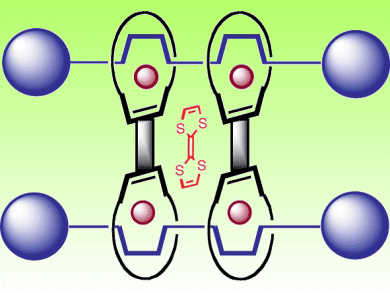French researchers led by Jean-Pierre Sauvage, University of Strasbourg, and Marc Sallé, University of Angers, have shown that a cyclic [4]rotaxane is able to encapsulate one π-donating tetrathiafulvalene (TTF) molecule thanks to donor–acceptor interactions. The encapsulation of another π donor, namely extended tetrathiafulvalene (exTTF), which possesses a similar π-donating ability but a much larger structure and a curved shape, is not possible because exTTF is too large to enter the cavity. This means that the cyclic rotaxane is a shape/size-selective receptor.
This work paves the way to the elaboration of new topologically interesting systems, like “rotaxanes of rotaxanes” by taking advantage of the threaded nature of the present complex.
- Intercalation of Tetrathiafulvalene between the Two Plates of a Copper(I)-Complexed [4]Rotaxane
J.-P. Sauvage, Y. Trolez, D. Canevet, M. Sallé,
Eur. J. Org. Chem. 2011.
DOI: 10.1002/ejoc.201100142




